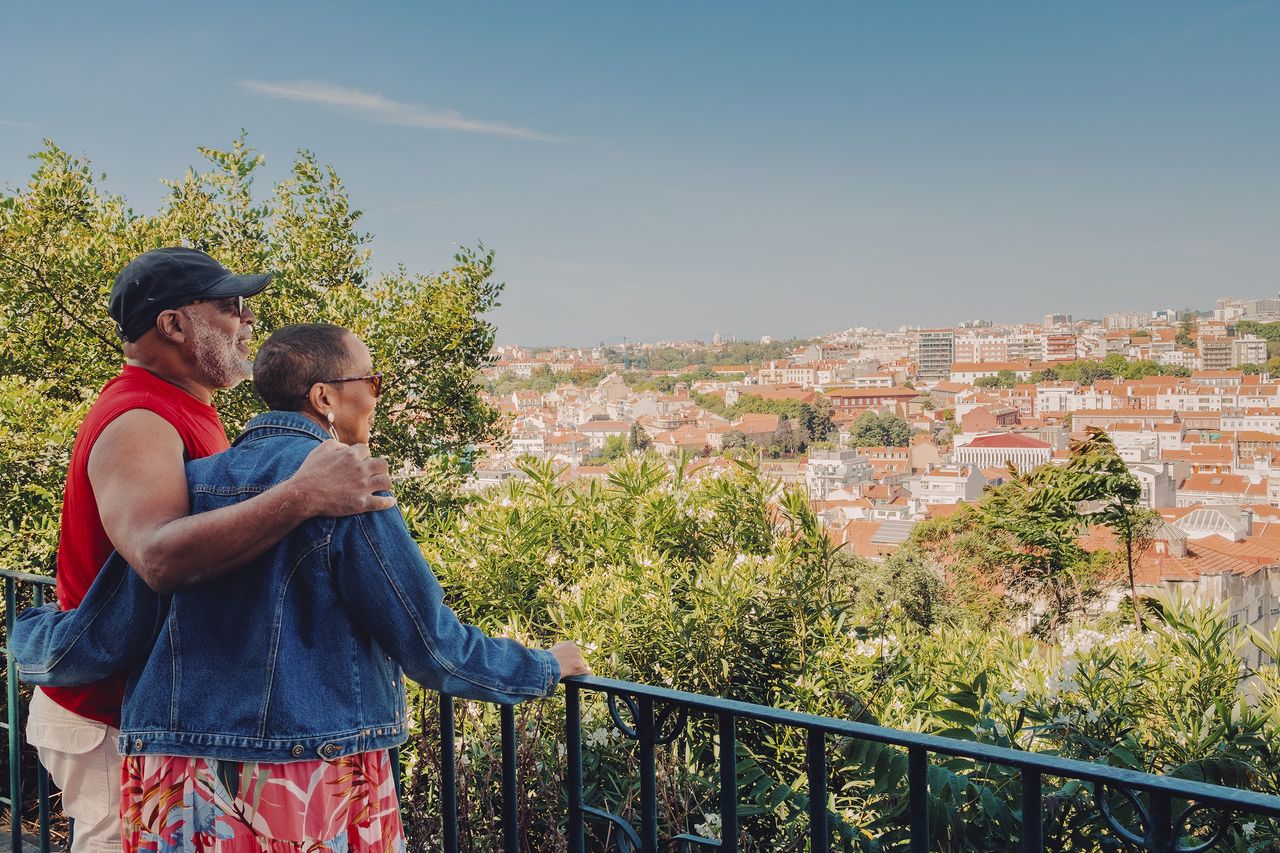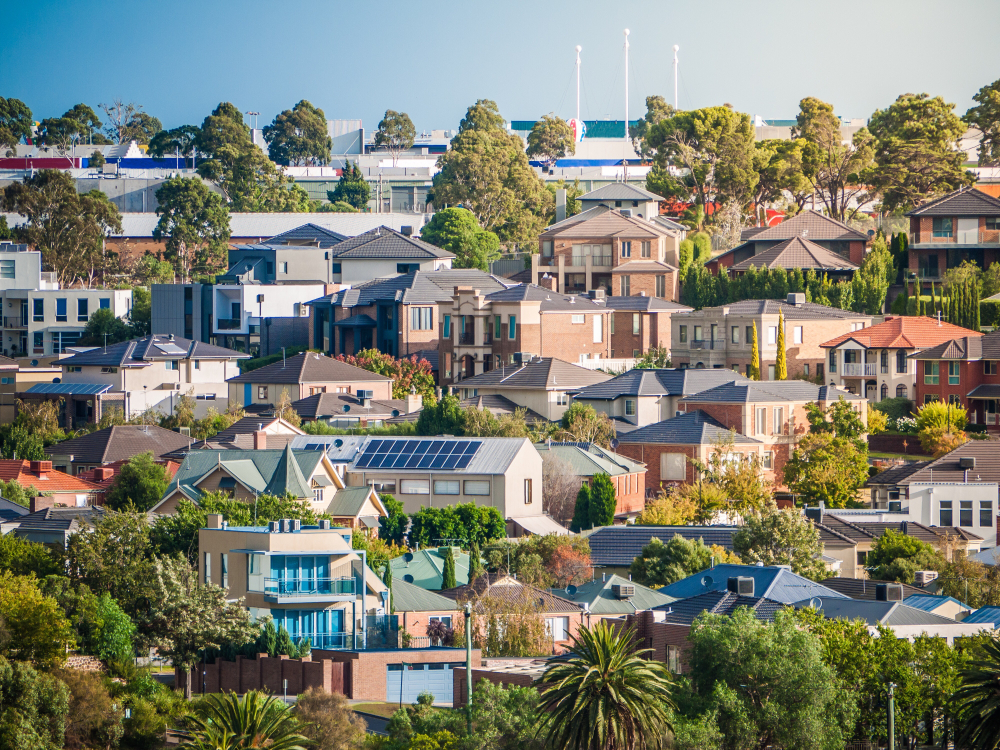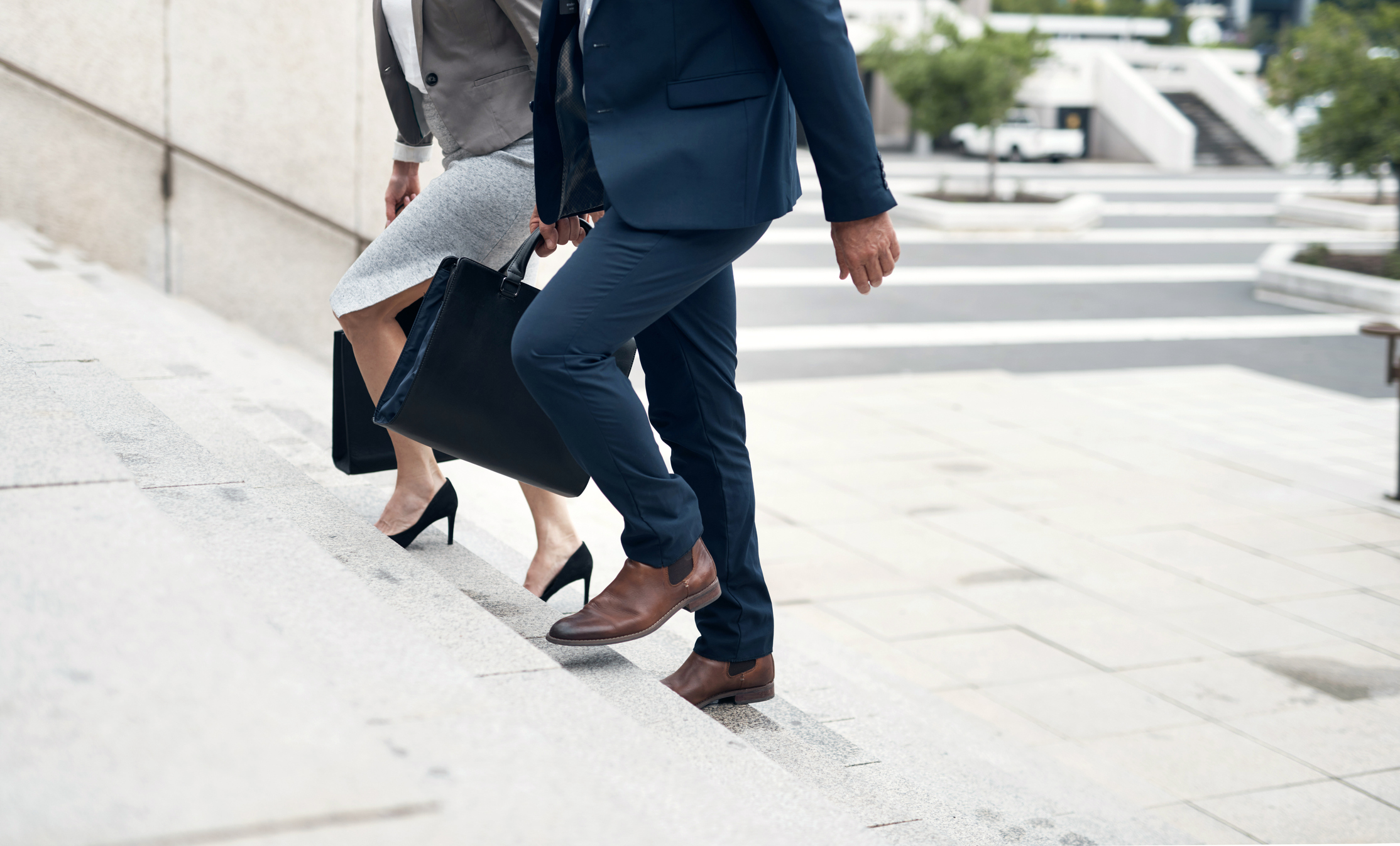Here’s What It Looks Like When Americans Retire Overseas
Six retirees open up about the financial and personal challenges of relocating abroad in retirement
Many Americans dream of retiring overseas, and more are packing their bags.
Whether seeking adventure, self-reinvention, or just a lower cost of living, international retirees face a unique set of money and life challenges. And paperwork.
It is unclear how many Americans actually retire abroad, but where people collect their Social Security checks provides a ballpark figure. Nearly 450,000 people received their benefits outside the U.S. at the end of 2021, up from 307,000 in 2008, according to the Social Security Administration, which says nearly half are U.S. citizens.
Once a fringe idea, retiring abroad has gone mainstream, said Kathleen Peddicord, founder of Live and Invest Overseas, which provides information on subjects including healthcare quality and the cost of living in various countries. Because many Americans living overseas have their Social Security checks deposited into U.S. bank accounts, government data likely understates the trend, she said.
The strong dollar has made many countries seem affordable, said Peddicord. Many countries have visas designed for retirees. Typically, they require applicants to disclose income and assets to prove they won’t become a financial burden. Other hurdles include leaving children and grandchildren, she added.
We spoke in depth with six retirees who relocated to France, Portugal, Spain and Costa Rica. With savings ranging from $70,000 to $1.8 million, they prove that an overseas move doesn’t require a massive nest egg. They shared insights about their spending and routines, the challenges of building a new life, and what has given them joy or anxiety along the way.
Retiring abroad took Rick Jones and Ellen Bryson two tries.
The couple moved to Buenos Aires in 2006 after realising during a vacation that they could afford to retire there despite being in their 50s at the time. They sold their Washington, D.C., apartment for about $900,000 and bought a sprawling place in Buenos Aires, where parrots perched in the trees outside their windows.
Yet the novelty eventually wore off, and while Bryson, 73 years old, was writing a novel, “I didn’t have a purpose for getting out of bed in the morning,” said Jones, now 71 and a retired Navy SEAL officer.
They returned to the U.S., but in 2016 Bryson came home from a French class with a new destination in mind: Paris.
The couple, who have no children, took two years to plan the move, selling their Norfolk, Va., home.
They joined the Association of Americans Resident Overseas and other expatriate organisations to learn about things including applying for French visas and renting an apartment. The social ties they forged “provided a support system during the pandemic,” said Bryson.
Jones sets annual goals that give him a sense of purpose. He took up the flute and regularly engages in conversation exchanges with native French speakers. To explore Paris, he and a friend walked the routes of the city’s many Metro lines, finishing each one in a day.
Bryson takes Pilates and French and is writing her third novel.
The two enjoy their local food market: the butchers who specialise in organ meats and wild game and a dairy farmer who sells unpasteurised milk that tastes like ice cream, said Jones.
Recently, he became president of WICE, a Paris-based group that connects English- and French-speaking communities. He volunteers a couple hours a day for the organisation.
The downside to living in France? Paperwork, said Jones, who reserves time every morning for forms, from tax returns to applications for driver’s licenses.
“To rent an apartment we had to put together a giant stack of forms going back years,” he said.
The couple have long-stay visas they renew annually, requiring them to show they have enough income to support themselves and to promise they won’t work for pay in France. Next year, they will qualify to apply for a visa that’s valid for 10 years.
Each month, they receive $4,300 from Social Security, about $5,000 from Jones’s military pension, and about $4,000 from a retirement account. They have no debt.
Their two-bedroom apartment with views of the Eiffel Tower costs about $3,100 a month. Under France’s national health insurance system, they pay a percentage of the cost of services. They receive supplementary coverage from the U.S. military.
Food costs about $1,100 a month, including two or three restaurant meals. Each month, they spend $375 for Bryson’s Pilates, $350 for Jones’s flute lessons and $230 for French lessons. They have budgeted around $6,500 for trips this year to Ireland and Marseille.
Jones said if either were to be diagnosed with dementia, they might move back to the U.S. to be near relatives. “We’d like to live out our days here,” he said.
Susan Wojcik, 62, fell in love with Costa Rica in 2001 on a vacation arranged by her housecleaner, a native of the country.
Wojcik and her former husband hiked near the Arenal volcano and stayed in the historic city of Alajuela. They were especially taken with a small Pacific coast beach town called Samara.
“They call Samara the black hole of happiness,” said Wojcik, a former resident of Southampton, N.Y. “If you come here and feel it, you never want to leave. I felt it.”
The couple divorced in 2015. She moved to Samara soon after, spending $235,000 of her $400,000 nest egg to buy land and build a small bed & breakfast with a pool surrounded by Hibiscus trees. She enjoyed chatting with guests over the tropical-fruit compote and cinnamon pancakes she cooked.
In 2019, Wojcik reconnected with a high school friend living in Atlanta. The two married in March 2020, just as lockdowns forced Wojcik to temporarily shut her B&B.
She was devastated when her husband, who had multiple sclerosis, died in November, 2020. In 2021, she sold the B&B and briefly moved to the U.S. to care for her ailing mother, who died that fall.
“I was just haemorrhaging money,” said Wojcik. “It was a traumatic time, but I am a resilient person. You have a choice: You can either be like, ‘Oh poor me,’ or you can think about the fact that ‘The sun rose today, my dogs are happy and we had a lovely walk on the beach.’”
Wojcik returned to Costa Rica and put the money from the sale of her business in the bank, where it earns 6% to 8% annually in interest. Her goal is to use the $70,000 that remains for emergencies.
While prices have risen, Wojcik says the $1,421 a month she receives from Social Security covers her expenses.
“I am very comfortable,” said Wojcik, who pays $700 a month for rent and utilities on a one-bedroom home and about $150 a month for food.
During tourist season, Wojcik often meets friends to listen to live music at local restaurants that charge about $15 for a meal.
Gas costs about $5.75 a gallon, but she doesn’t drive much. Wojcik recently obtained a residence permit and pays $90 a month to the public healthcare system for insurance.
Five friends from the U.S. live nearby but Wojcik has also become friends with locals. Her Spanish, at an eighth-grade level when she arrived, is now close to fluent.
Most days, she walks her dogs on the beach at dawn. She produces plays with a community theatre group she started in 2016.
The downside to living in Costa Rica is the inefficiency that can mean long lines at the bank and requirements to pay bills in person.
“If you can tolerate the red tape it’s paradise,” Wojcik said.
Matthew Coe, 60, moved to Barcelona about 13 years ago after working and traveling abroad. The former corporate lawyer worked remotely from Spain as a legal consultant, invested in local real estate, and last year started his own business.
His business, which helps international buyers find and redo homes around Barcelona, takes about 20 hours a week, on average, though some weeks he doesn’t work at all and that is the way he likes it. The job, which he expects to generate $50,000 in income this year, taps into his passion for design and brings him closer to the local community.
“I plan on never fully retiring,” he said.
He spends about $3,000 a month on food, utilities, public transportation, and other living expenses. His roughly 900-square-foot condo cost $400,000, and he pays about $1,000 a year for a private health insurance policy that he keeps in addition to the public insurance he receives through the regional Catalan government. He has no debt.
Coe, who is single with no children, grew up in eastern Washington state. His mother, who is in her 80s, and siblings still live in the U.S. Distance from family and some close friends is the part of living abroad that he finds most difficult. While video calls have made things easier, a big slice of his budget is allocated to travel—about $20,000—so he can maintain those relationships and take vacations.
If he was living in Seattle, Coe estimates his monthly expenses would be closer to $6,500 including travel and healthcare. He’d worry that the roughly $1.8 million he’s saved wouldn’t go as far, he said.
“My stress level in Spain is much lower as a result of the lower cost of living and an overall higher quality of life,” he said.
Still, he takes a conservative approach with his savings. About half of his $1.8 million is invested in certificates of deposit, short-term T-bills, money-market funds and cash. The rest is allocated to exchange-traded funds and individual company stocks.
Coe’s typical day might start with catching up on the news, then a pool swim followed by an open-air session with a personal trainer. He might head to a furniture workshop for interior design inspiration. A leisurely lunch with a friend at a neighbourhood public market, apartment viewings and a late afternoon walk might follow.
Although Coe could hold casual conversations in Spanish with local shopkeepers after six months, it took about two years before he became sufficiently fluent in Spanish to feel comfortable conducting a business negotiation. He’s currently learning Catalan.
About six years ago, Halisi Vinson and Ricardo Crawley realised their financial life needed a major change.
The wake-up call came in part after meeting with a financial adviser who told them they’d likely struggle in retirement if they didn’t boost their savings.
Vinson, now 58, and Crawley, now 67, had about $25,000 in credit-card debt and less than $50,000 saved in total for retirement at the time.
The Denver couple, who married about 20 years ago, blamed their excessive spending. They had a television in every room of their home and spent about $1,000 a month on meals out.
They thought they were doing well financially but when Vinson downloaded about three months of their credit-card statements, the couple was shocked they were spending more than they made.
They agreed to drastically cut back.
“I didn’t want to die in poverty,” said Vinson, the retired executive director of the Colorado Democratic Party.
They started buying more groceries, eating out far less and tracked their spending. They checked with each other before spending more than $100. They socked away about 60% of their income.
They eventually paid their credit-card debt and managed to increase their retirement savings to about $300,000—all in about six years.
They have six adult children between them and since most of them have moved away from Denver, the couple no longer felt anchored there.
After speaking to other Americans who had moved abroad and a one-month visit, the couple decided to move to Portugal. They enjoyed its slower pace and the 75-cent espresso, Crawley said.
They rented their Denver home to two of their adult children, making a profit of about $100 a month. They break even on the Los Angeles apartment they purchased about two years ago and rent to Vinson’s mother.
They have roughly $600,000 in mortgage debt. They eventually plan to rent both residences out at market rent, which will net them about $1,000 a month in total.
Crawley receives about $2,700 in Social Security. Vinson plans to take Social Security as soon as she’s able.
Living in Lisbon has helped them further trim spending. Expenses including rent and dining out run about $2,600 a month, about half what they’d expect to spend in the U.S.
They both feel at peace no longer constantly worrying about money. They enjoy hours-long, low-cost meals at local cafes with new friends, exploring Portugal or creating videos for their YouTube channel, which encourages other Black Americans to move abroad for a lower cost of living.
—Design by Andrew Levinson.
 Copyright 2020, Dow Jones & Company, Inc. All Rights Reserved Worldwide. LEARN MORE
Copyright 2020, Dow Jones & Company, Inc. All Rights Reserved Worldwide. LEARN MORE
This stylish family home combines a classic palette and finishes with a flexible floorplan
Just 55 minutes from Sydney, make this your creative getaway located in the majestic Hawkesbury region.
This may be contributing to continually rising weekly rents
There has been a substantial increase in the number of Australians earning high incomes who are renting their homes instead of owning them, and this may be another element contributing to higher market demand and continually rising rents, according to new research.
The portion of households with an annual income of $140,000 per year (in 2021 dollars), went from 8 percent of the private rental market in 1996 to 24 percent in 2021, according to research by the Australian Housing and Urban Research Institute (AHURI). The AHURI study highlights that longer-term declines in the rate of home ownership in Australia are likely the cause of this trend.
The biggest challenge this creates is the flow-on effect on lower-income households because they may face stronger competition for a limited supply of rental stock, and they also have less capacity to cope with rising rents that look likely to keep going up due to the entrenched undersupply.
The 2024 ANZ CoreLogic Housing Affordability Report notes that weekly rents have been rising strongly since the pandemic and are currently re-accelerating. “Nationally, annual rent growth has lifted from a recent low of 8.1 percent year-on-year in October 2023, to 8.6 percent year-on-year in March 2024,” according to the report. “The re-acceleration was particularly evident in house rents, where annual growth bottomed out at 6.8 percent in the year to September, and rose to 8.4 percent in the year to March 2024.”
Rents are also rising in markets that have experienced recent declines. “In Hobart, rent values saw a downturn of -6 percent between March and October 2023. Since bottoming out in October, rents have now moved 5 percent higher to the end of March, and are just 1 percent off the record highs in March 2023. The Canberra rental market was the only other capital city to see a decline in rents in recent years, where rent values fell -3.8 percent between June 2022 and September 2023. Since then, Canberra rents have risen 3.5 percent, and are 1 percent from the record high.”
The Productivity Commission’s review of the National Housing and Homelessness Agreement points out that high-income earners also have more capacity to relocate to cheaper markets when rents rise, which creates more competition for lower-income households competing for homes in those same areas.
ANZ CoreLogic notes that rents in lower-cost markets have risen the most in recent years, so much so that the portion of earnings that lower-income households have to dedicate to rent has reached a record high 54.3 percent. For middle-income households, it’s 32.2 percent and for high-income households, it’s just 22.9 percent. ‘Housing stress’ has long been defined as requiring more than 30 percent of income to put a roof over your head.
While some high-income households may aspire to own their own homes, rising property values have made that a difficult and long process given the years it takes to save a deposit. ANZ CoreLogic data shows it now takes a median 10.1 years in the capital cities and 9.9 years in regional areas to save a 20 percent deposit to buy a property.
It also takes 48.3 percent of income in the cities and 47.1 percent in the regions to cover mortgage repayments at today’s home loan interest rates, which is far greater than the portion of income required to service rents at a median 30.4 percent in cities and 33.3 percent in the regions.
Just 55 minutes from Sydney, make this your creative getaway located in the majestic Hawkesbury region.
Consumers are going to gravitate toward applications powered by the buzzy new technology, analyst Michael Wolf predicts



